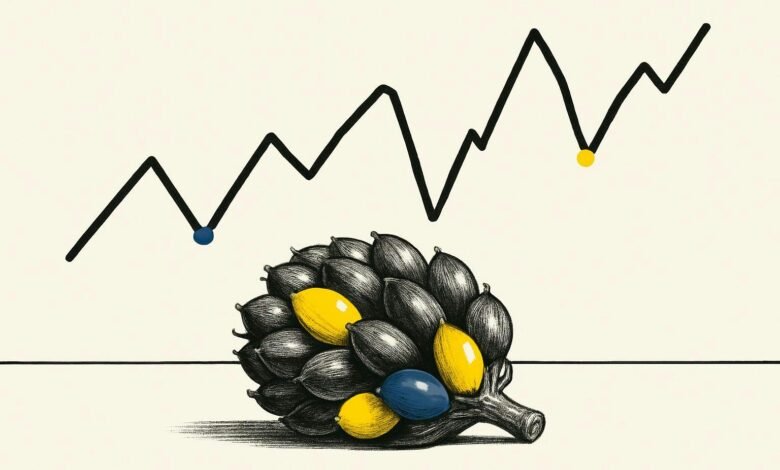Palm Oil Futures Slip Ahead Of Key Data Release

What’s going on here?
Malaysian palm oil futures edged down 0.14% to 4,431 ringgit per metric ton, with traders holding their breath for fresh supply and demand data as energy prices and currency moves add extra uncertainty.
What does this mean?
The upcoming Malaysian Palm Oil Board (MPOB) data, due October 10, has markets holding steady—these regular updates can quickly change expectations for global supply and demand. The December contract’s 0.20% dip over two prior sessions signals nerves, especially with palm oil’s fortunes often tied to moves in other major edible oils. With China’s Dalian Commodity Exchange shut for a holiday, traders are left without key price cues from Asia’s biggest oilseed market. Crude oil’s stability and OPEC+’s slight production bump have kept attention on the balance between demand concerns and supply. Rising crude prices could boost demand for palm oil in biodiesel production, supporting prices. Meanwhile, Argentina raising biofuel prices and the US preparing a hefty farmer aid package highlight how government action continues to prop up agricultural markets. Still, a stronger ringgit—up 0.02% against the US dollar—means global buyers will have to pay more for Malaysian palm oil, possibly limiting short-term demand.
Why should I care?
For markets: Volatility could spike as the data drops.
Palm oil sets the mood for the wider edible oils market, influencing everything from food makers to energy companies. The tug-of-war between currency strength, political uncertainty, and the closed Chinese exchange means traders are flying blind—so the upcoming MPOB release could prompt sharp price swings and fresh moves across related markets.
The bigger picture: Commodities at the crossroads of policy and innovation.
Palm oil’s outlook is intertwined with changing trade policies, biofuel rules, and tech shifts—from Argentina’s biofuel price move to the US’s billion-dollar farm support plans. These dynamics show how commodity prices can move not just on crop reports, but on global policy and innovation, keeping both businesses and investors closely tuned to headlines far beyond the plantations.
IN PARTNERSHIP WITH THE AVERAGE JOE
Get the newsletter that rich investors actually read
The Average Joe strips markets down to what matters, giving you financial insights you’ll actually use.
It’s read by more than 200,000 people… and roughly one in five are millionaires.
Do they read it because they’re rich, or are they rich because they read it?
We don’t run those studies.
Credit: Source link






